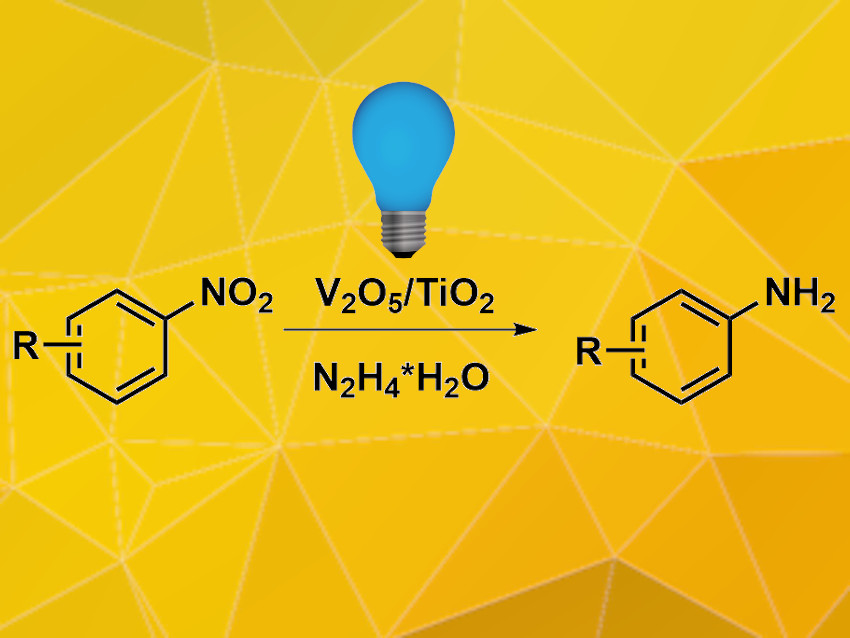Aromatic amines constitute an important class of organic molecules. They are frequently used as building blocks for the synthesis of, e.g., pharmaceuticals or dyes. Aromatic amines can be prepared by the reduction of aromatic nitro compounds. Established procedures for this type of reaction often use catalysts based on expensive noble metals such as palladium or platinum. Substituting these metals by more abundant ones would be useful. Titanium dioxide can catalyze the reduction of nitroarenes under UV irradiation, but UV light can damage sensitive substrates. This challenge can be overcome by combining titanium dioxide with an additive that can absorb light in the visible region.
Sushil K. Maurya, CSIR-Institute of Himalayan Bioresource Technology, Palampur, India, and Academy of Scientific and Innovative Research, Ghaziabad, India, and colleagues have developed a nitroarene reduction process mediated by vanadium oxide on titanium oxide under blue LED light (general reaction pictured). The team used a heterogenous catalyst containing 20 % vanadium oxide on titania, hydrazine hydrate as reductant, and ethanol as the solvent.
The desired amines were obtained in yields of up to 95 %. The reaction is compatible with various functional groups, including unsaturated residues and phenolic OH groups. Polycyclic hydrocarbons and heterocyclic substrates also gave the target products in high yields. The approach was also successfully used at the gram scale with only a slight drop in yield from 93 % to 89 %. The method proved suitable for the synthesis of intermediates for different pharmaceutically active compounds, such as acetaminophen and benzocaine.
- Heterogeneous V2O5/TiO2-Mediated Photocatalytic Reduction of Nitro Compounds to the Corresponding Amines under Visible Light,
Shashi Kumar, Sushil K. Maurya,
J. Org. Chem. 2023.
https://doi.org/10.1021/acs.joc.3c00569




